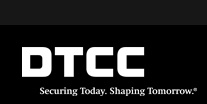DTCC and Digital Asset Holdings have announced their intention to pilot a blockchain project for moving US government repo into into the same-day settlement realm. The press release describes an extension of the Fixed Income Clearing Corporation (FICC) infrastructure that would allow same-day starting repo trades to settle through DTCC’s facility, with DTCC acting as the central clearing party. This challenges the Fedwire system and is an example of how blockchain may force substantial change across market actors and their traditional roles.
Conceptually similar to NSCC/CNS for equities, FICC has long supported pure buy-sell settlement for government and other fixed income securities. Unlike the equities market – where DTCC processes the lion’s share of securities lending settlement – the start leg (the initial sell) of securities finance transactions in the FI market has continued to settle through the Fedwire Securities Service. The closing leg often settles through FICC by being swept into the overall trades-settling-today netting and settlement process. The new initiative is intended to extend the benefits of trade and position netting to the bilateral same-day repo trading market, allowing participants to utilize FICC for “real-time” securities finance transactions.
DTCC states that they will utilize blockchain-type infrastructure for this service, emphasizing the inherent real-time nature of the technology.
If successfully implemented, we expect that the DTCC’s blockchain for repo initiative will be a tangible example of how roles within the capital markets triumvirate will change, as described by the blockchain panelists at Finadium’s recent annual conference. CSDs, Banks and CCPs form the three legs of the system as it exists today, all with clearly defined realms of responsibility. DTCC’s new service would presumably supersede the role of Federal Reserve custody banks, who now control access to the Fedwire securities service, and manage most of these transactions today. This would actually shift what in equity markets is a CSD function, away from custody banks. In this respect DTCC’s new service would be less of a market innovation and more of a normalization.
Which is not to say this would be universally popular. Fixed Income and repo professionals often contend that their way of settling trades is superior to the DTCC model. Indeed, some market revolutionaries – the true blockchain purists – may actually look at this as step in the wrong direction. This camp tends to view net settlement and CSD involvement in trade settlement as unnecessary and outdated in a blockchain-based environment. The technology itself is designed to obviate the need for such intermediation. In the same vein, it is not entirely clear exactly what mechanical advantage this will offer – the Fedwire is generally considered a pretty stable and efficient mechanism. So is this a solution in search of a problem?
All that being said, there are some clear advantages to a unified settlement infrastructure for all FI activities. It is not at all surprising that DTCC – the dominant player in equity and traditional trade settlement – would choose to extend their expertise and market role into the final remaining bastion of settlement outside of their environment. The primary advantage would seem to be the transfer of intraday settlement risk (daylight exposure) away from custody banks and into the DTCC, and in the netting effects of virtually all cash settlement occurring in one place.
It remains an open question whether the market will consider the advantages worthy of moving away from a decades old, proven way of doing business. This is an excellent example, and potentially a leading indicator, of just how disruptive blockchain technology will be. Oh, and then there’s that matter of the $50 billion that DTCC wants to support the credit backstop of the FICC and create more stability for US repo clearing (“Is $50 Billion the Price of Repo Safety?” WSJ, December 9, 2015).


